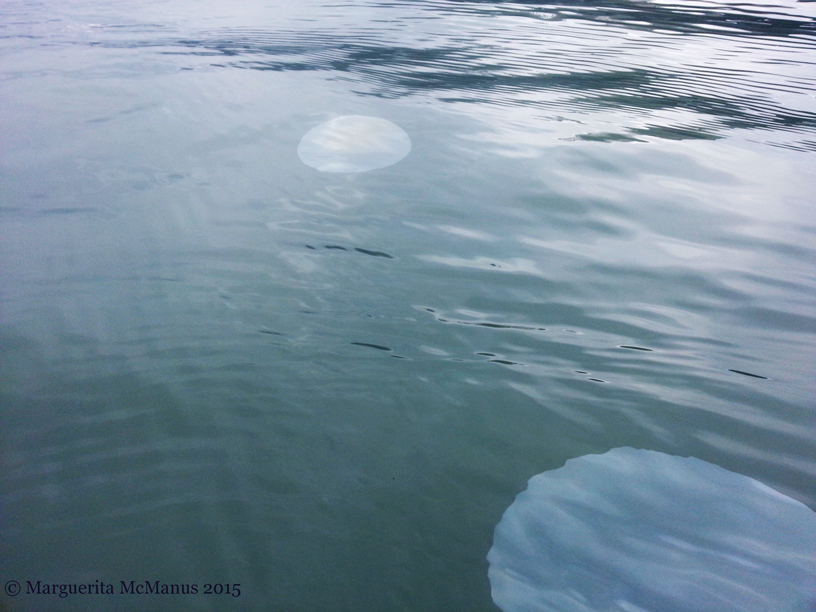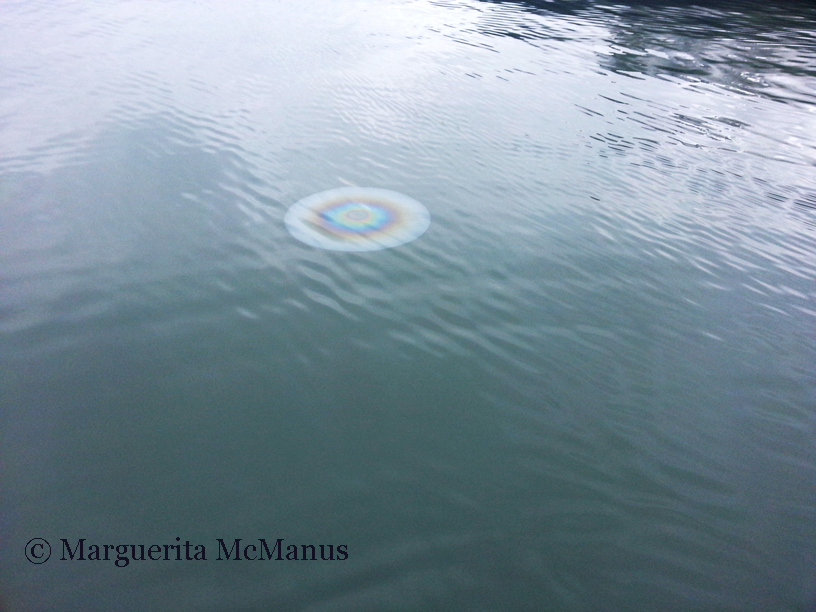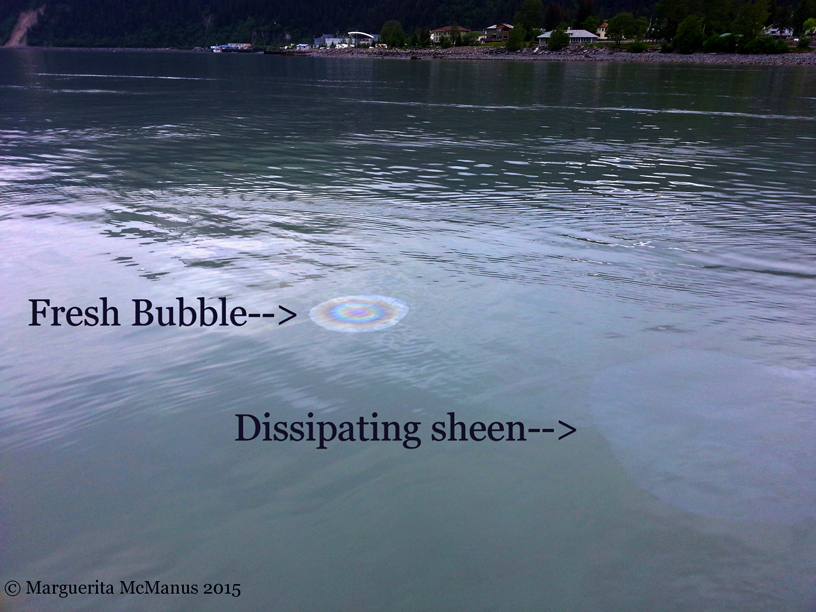
While Tom was running his new and improved jitney around Resurrection Bay the morning of June 1, he noticed a couple of oil sheen spots on the flat calm surface of the bay. They were in an odd spot and perfectly formed and his brain said “wait a minute!” as he cruised along the beach. He swooped the jitney around to go back to see if his eyes were tricking him and as he stared at the sheens a new one popped up from below!
This section of the bay is very familiar to Tom. He grew up just a few hundred yards from it and has fished there from the banks, in a skiff or on a commercial seiner for most of his life.
Tom was born and raised in Seward and he knows a lot of the 1964 earthquake stories, including the one about the railroad cars that were submerged by the tsunami, right below where his jitney was now idling and he was watching diesel or gas bubble to the surface at about eight second intervals.
We watched, photographed, videotaped and reported this sad phenomenon over the course of an hour and a half before moving on. The Coast Guard later contacted Tom and they are going out together Tuesday morning to witness it again. Tom won’t have any problem finding the site – he’s already done so twice. The most difficult factor will be wind, which ruffles the surface and makes the sheens harder to find.

The oddest part of the story isn’t that there might be railroad tanker cars full of fuel – now leaking – hundreds of feet under Resurrection Bay. That part’s pretty plausible. The fact that the leak was found by Tom, who had the height of the crow’s nest of the jitney to help see the sheen in the first place; that he’d recognize immediately what an oddity it was to see a sheen like that there (he trains with the oil spill response team once or twice a year); that he lives just a few hundred yards from that leak (his house is in the background of the photo below) – now that’s more than just a coincidence. He was meant to find this issue and he’s determined to see it resolved.

UPDATE 6/2/2015
Tom checked the site again at 9am and found the same rate of release of contaminant. We took GPS readings, depth readings, photos and scooped a sample into a large jar.

